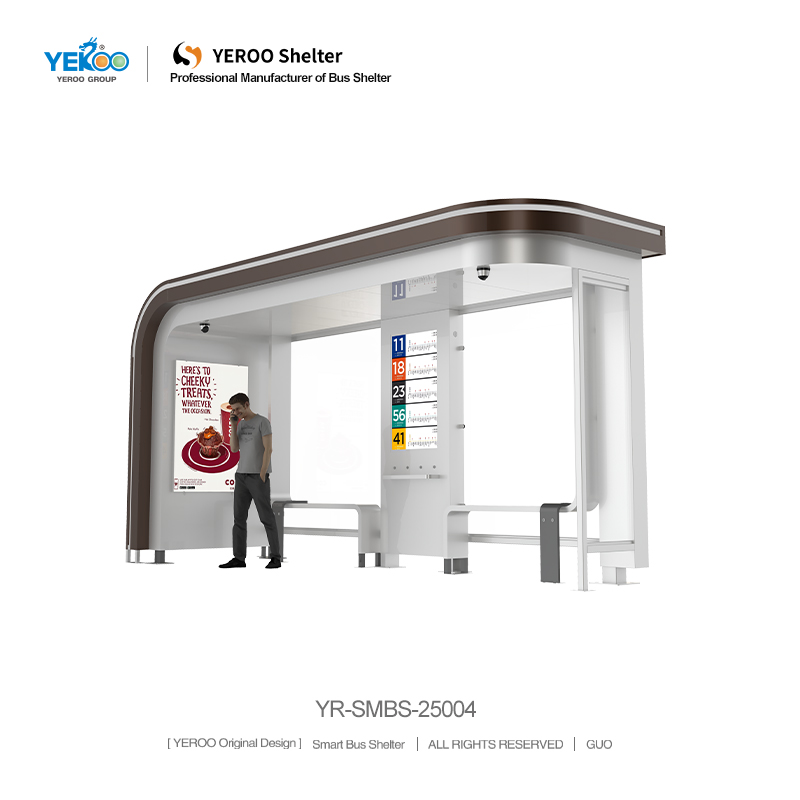What Factors Influence Bus Shelter Prices in the Market
Prices for bus shelters tend to range from very low to very high. Knowing what causes pricing variation helps urban planners, project managers, and transit authorities make good choices. One of the largest bus shelters providers, Yeroo Group, shows how reasonable pricing demonstrates an understanding of value factors. Below is value pricing factors information based on Yeroo Group’s understanding of these value factors.
Material choice is one of the largest pricing factors for bus shelters. Although the best quality galvanized and stainless steel, along with UV protected polycarbonate, may have higher short term costs, they do result in lower maintenance costs in the long term. For instance, Yeroo Group offers bus shelters made of high quality galvanized steel which means the shelters will last between 10-15 years longer than those made of ordinary galvanized steel. This eliminates the need to replace the shelters every decade and, ultimately, reduces costs. Conversely, using lower quality materials such as cheap plastic or thin sheet metal will result in the need to repair and replace bus shelters frequently.

When it comes to coastal construction, using stainless steel is a must because of the corrosive saltwater. This option is more expensive, and therefore, inland regions use galvanized steel, which is a more cost-effective option with some quality. Shelter construction materials differ greatly in cost, and these differences reflect durability and weather resistance.
Size and Capacity Affect Bus Shelters Prices
Size encompasses length and width, and even the seating capacity of a shelter, and this greatly affects price. Larger shelters that are designed to accommodate 10+ passengers and have extra features like multiple benches, wider roofs, and more standing space are naturally more expensive than compact models that only fit 2-3 people. Bus shelters of Yeroo Group range in length from 2 meters to 6 meters, with the price increasing with size. For example, a small bus shelter in a suburban area, like 2x1.5 meters, is more affordable compared to a large one, which includes additional features, placed in more expensive downtown areas, like 6x2 meters. Larger size means more materials like, more steel, more glass, and more polycarbonate all of which increases bus shelters prices. Being the right size greatly increases the value of a shelter and protects builders against overpaying for shelters that will not be used, and equally protects builders from losing shelters that are underbuilt.
Functional Features Add to Bus Shelters Prices
The complexity and quantity of functional features included in a bus shelter determine price more than anything else.
Basic shelters that only include a roof and bench have low prices, while more expensive shelters include features such as USB charging ports, LED lights, security cameras, and real-time public transportation information screens. For instance, Yeroo Group’s tech-integrated bus shelters have smart screens connected to the transit system, which increases the cost of production and installation, but improves the experience for passengers. Additional weather-related features like heating elements to cold-weather shelters or misting systems to hot-weather shelters are also priced higher. Additional inclusive design features like wheelchair ramps or low-height information panels also raise prices. Every added feature increases the cost of a shelter because more materials, technical integration, and labor are needed. All of these reasons contribute to higher bus shelters prices.

The Customization of Bus Shelters Increases Their Price
Customization to a city’s unique design, brands, and location also increases bus shelters prices. Prices for generic, off-the-shelf bus shelters are lower because these are mass-produced and have a standard design. In contrast, custom-designed bus shelters, like those Yeroo Group created for historic districts or event branding, involve new engineering, new materials, and specialized work.
Take a city that is looking for bus shelters with a rustic wooden finish that matches the historic architecture. Those will cost more than the standard steel ones. Adding a custom color, logo, or shape design will also cost more since they are not made for mass production. Although these factors do make bus shelters more expensive, they are designed for the specific urban context and the project goals, which is what really matters for cities that are trying to design an integrated cohesive public space.
Installation and Site Preparation Costs Impact Total Bus Shelters Prices.
The cost of bus shelters does not include just the parts of the shelter themselves. Installation and site preparation are very important cost factors as well. Some sites will require more preparation than others, for example, for the excavation of concrete foundations, utility line relocations, or traffic management during the installation. Yeroo Group offers installation as part of their service, and site complexity will result in the price variation, for example, a shelter to be set on a flat and easily accessible sidewalk will have lower installation cost than one to be set on a slope near busy roads. Remote places will have higher transportation costs to deliver the shelter parts which are included in the total bus shelters prices. If installation and site preparation costs are ignored, the budget will be exceeded.
Conclusion
The price of bus shelters depends on the quality of material, size of the shelter, functional features, customizations, and the installation needs- all of which the Yeroo Group takes into account to offer clients transparent pricing.
Knowing these factors helps customers match their budgets with what the project involves: they can choose more affordable materials and smaller sizes for areas that don't get much use, or they can choose high-end, more complex shelters for busy downtown areas. After all, the price of bus shelters corresponds to what they provide; they are durable, they ensure passenger comfort, and they meet urban objectives. Hence, consider value over price.


